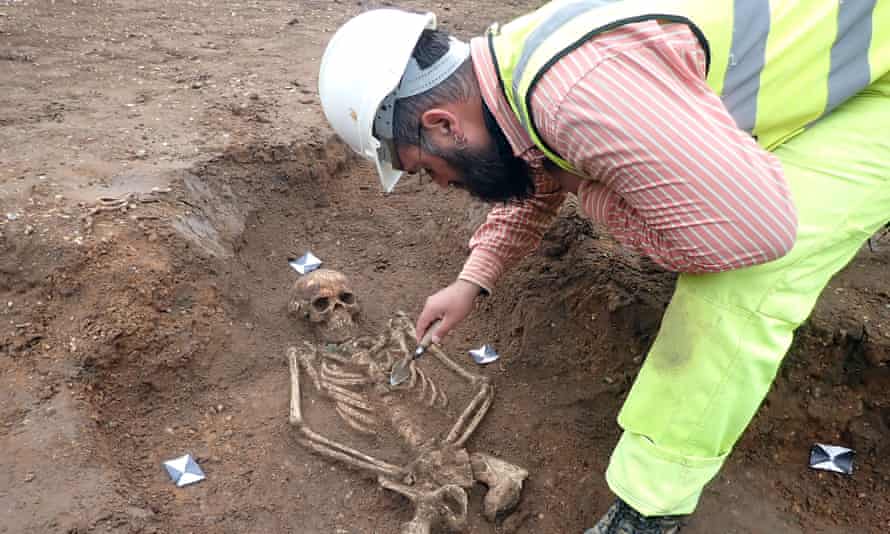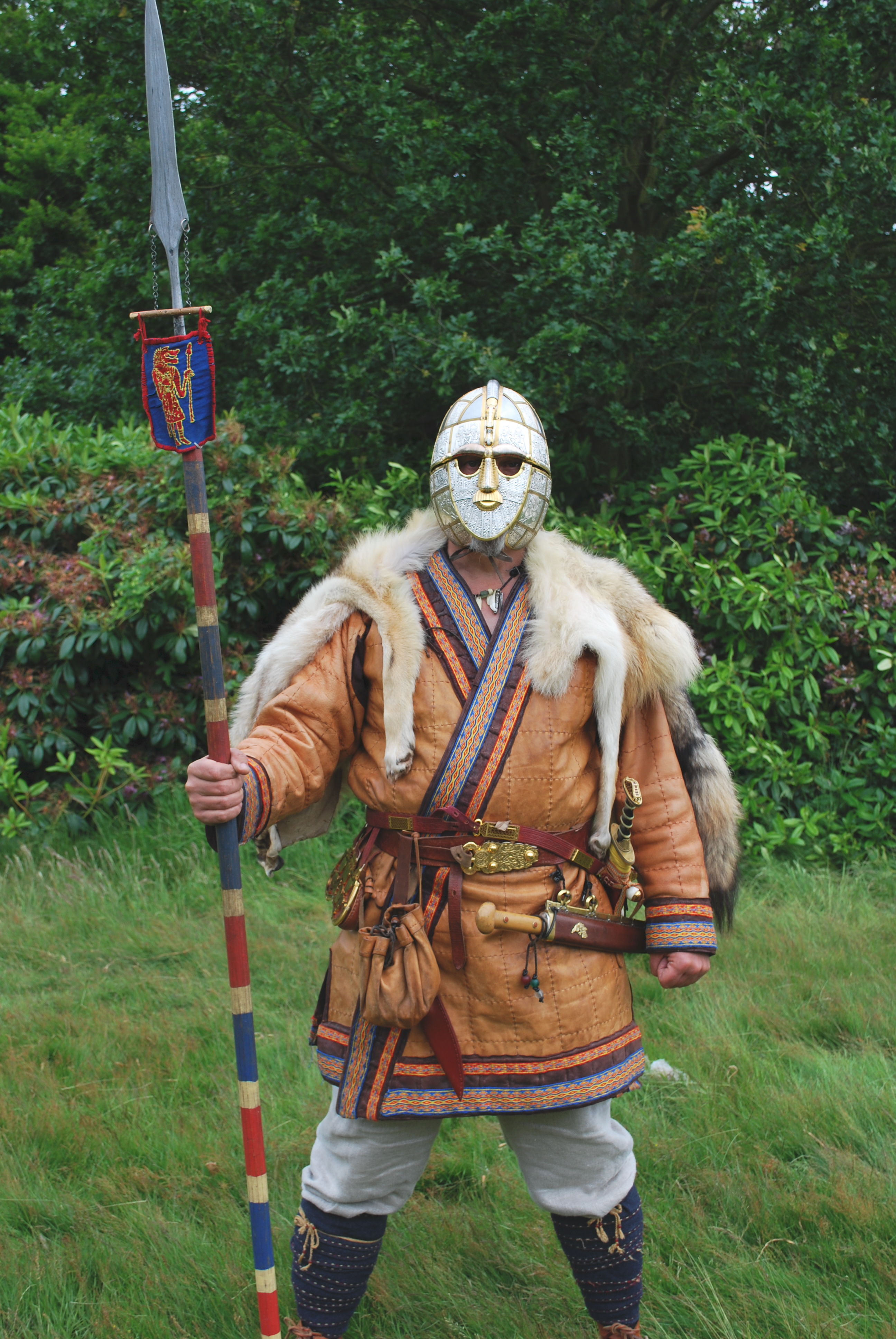Frideswide
Fortea Morgana :) PeteByrdie certificated Princess
- Joined
- Jul 14, 2014
- Messages
- 16,310
- Location
- An Eochair
"tooth enamel fragments"
"MOLA"

"MOLA"


Part of a Viking-age treasure hoard unearthed in Galloway belonged to a man named Egbert, research has concluded.
Galloway Viking-age treasure: Egbert revealed as name of one owner
Examination of Anglo-Saxon runic inscriptions on silver arm-rings has revealed the name Ecgbeorht.
https://www.bbc.co.uk/news/uk-scotland-south-scotland-49905258
"Yet these runes are not of the familiar Scandinavian variety common around this date on the nearby Isle of Man, but of a distinctively Anglo-Saxon type."
Reading runes... wish there had been more details about this.
That's great, cheers!
they unearthed two bronze bowls, — and, realizing the significance of the find, registered their discovery with the Portable Antiquities Scheme (PAS) run by the British Museum and the National Museum of Wales, which records amateur archaeological finds.
A PAS archaeologist then investigated, recovering the bronze bowls and a pair of iron spearheads that suggested the site was likely to be an Anglo-Saxon grave. Those objects will soon go on display at the Buckinghamshire Museum in Aylesbury.
The sword is made of iron and is held in a decorated scabbard made of bronze, leather and wood. Some of the leather has survived many centuries in the ground because it was protected by the corrosion of the iron blade
The scabbard also had a bronze fitting called a "chape" at the end, which showed a cut-mark where it might have been damaged by a warrior on foot who struck the wearer of the scabbard seated on horseback.
This suggested the sword was a working weapon, rather than just for show, he said. "It's quite an interesting piece of evidence that this person saw active combat."
Several other items buried with the Marlow Warlord indicate his importance.
The bronze bowls were imported to Britain from what is now Belgium or France, which suggested he had far-reaching connections, Thomas said. The glass vessel was also a very rare find from the period — glass was relatively common under Roman rule, but it is seldom found at early Anglo-Saxon sites — while the sword itself must have been made by an expert craftsman.
(C) Independant. '20The silver cross was likely commissioned by those in the highest levels of Anglo-Saxon society.
The true value of a 1,000-year-old Anglo-Saxon silver cross, found in Scotland in a rare hoard of Viking artefacts, has been revealed for the first time.
Delicate conservation work on the cross has unveiled its intricate decoration and it is now thought the individual who commissioned the treasure may have been a high-standing cleric or even a king.
Discovered by metal detectorist Derek McLennan when scanning a ploughed field in Dumfries and Galloway in 2014, the cross was dug up in the Galloway Hoard – the richest and rarest collection of Viking-era objects ever to be found in Britain and Ireland.
Conservators say the treasures are of international significance and could transform our understanding of this period of Scottish history. The collection was acquired by National Museums Scotland (NMS) in 2017.
Galloway Hoard comprising more than 100 objects lay undiscovered for 1,000 years before discovery in 2014
(C) The Guardian.'20.Researchers in Scotland hope to unlock the secrets of a stunning Viking-age hoard after a receiving a £1m grant to examine the provenance of the 10th century haul that lay undisturbed for a thousand years before being unearthed by a metal detectorist.
The incredible discovery of the Galloway Hoard, comprising more than 100 objects including silver jewellery and ingots, was made in September 2014 in a field in Dumfries and Galloway. It has since been acquired by National Museums Scotland (NMS).
NMS will carry out a three-year project, “Unwrapping the Galloway Hoard”, in partnership with the University of Glasgow, to examine in detail the objects, due to go on display in an exhibition next year.
The haul contains an unparalleled range of precious metal and jewelled items, including a rare gold ingot, a unique gold bird-shaped pin and a decorated silver-gilt vessel, the only complete lidded vessel of its type ever discovered in Britain and Ireland.
Inside the vessel were beads, amulets of glass and rock crystal, a silver penannular brooch and five Anglo-Saxon disc brooches not previously found in Scotland. Parts of the find were wrapped in fragile textile bundles.
Taken altogether, the hoard hints at hitherto unknown connections between people across Europe and beyond, and, according to researchers, it provides a rare opportunity to research and reveal many lost aspects of the Viking age.


I know exactly where the burial site is - used to play there as a kid. We called it 'the Roman graves' . Only a couple of hundred years out. That would have been 40 years before the graves were discovered. I haven't been back for a few years but would be astonished if it is between a pub and an ALDI since the Southend Victoria to Shenfield railway is on one side, the A127 on the other, and on the other side of the A127 is Priory Park.Artefacts being returned to Southend.
A royal burial site found between a pub and Aldi supermarket has been hailed as the UK's answer to Tutankhamun's tomb.
Workers unearthed the grave, which contained dozens of rare artefacts, during roadworks in Prittlewell, near Southend, Essex, in 2003. Tooth enamel fragments were the only human remains, but experts say their "best guess" is that they belonged to a 6th Century Anglo-Saxon prince. It is said to be the oldest example of a Christian Anglo-Saxon royal burial.
Now, after 15 years of expert analysis some of the artefacts are returning to Southend on permanent display for the first time. When a team from the Museum of London Archaeology (Mola) excavated the site, they said they were "astounded" to find the burial chamber intact. The remains of the timber structure, which would have measured about 13ft (4m) square and 5ft (1.5m) deep, housed some 40 rare and precious artefacts.
https://www.bbc.com/news/uk-england-essex-48203883
Anyone see The Dig on Netflix? Ralph Fiennes is pretty good as Brown.
Archaeologist Basil Brown unearthed some of the greatest treasures ever found in the UK. The story of the Sutton Hoo discovery is being retold in the new Netflix film The Dig. Who was Mr Brown and what was his role in revealing the Anglo-Saxon finds?

Who was Basil Brown?
Born in 1888, he was the only child of farmer George and Charlotte Brown. He spent almost his entire life in the Suffolk village of Rickinghall and left the local school there at the age of 12. Despite his limited formal education, he taught himself several languages and studied diplomas in astronomy, geography and geology, says historian Caleb Howgego. ...
Mr Brown, who was also a keen astronomer and author of Astronomical Atlases Maps and Charts, had previously been involved in excavating the Roman settlement at Stanton Chair, near Ixworth, and Roman pottery kilns in the Wattisfield area. His work caught the attention of Ipswich Museum.
When Edith Pretty decided to excavate part of her estate at Sutton Hoo, near Woodbridge, Suffolk in 1938, she was advised by the museum to call upon his services. While working on the site, Mr Brown cycled 35 miles (56km) each way between there and his home every week.
Cambridge archaeologist Charles Phillips, who took over the excavation once it became clear it was of huge significance, called Mr Brown "a pure piece of rustic Suffolk" in his book, My Life in Archaeology....
https://www.bbc.com/news/uk-england-suffolk-55877934
Watched it last night. Quite a charming drama and top marks for belatedly giving Basil Brown the credit he was due. Got me Googling the real story behind the dig afterwards. Carey Mulligan is only 36 and is rather too young to play Edith Pretty, who would have been mid-fifties at the start of the film. Otherwise though, very well cast and gently compelling in a very English sort of way. There were definite hints of Brideshead Revisited in there!
Until reading up on it afterwards, I didn't realise that the ship itself had completely disintegrated. The shape we see in the ground is just the imprint or ghost of the ship.
I read a review that said it was aptly named, because all they do in it is bloody dig.



